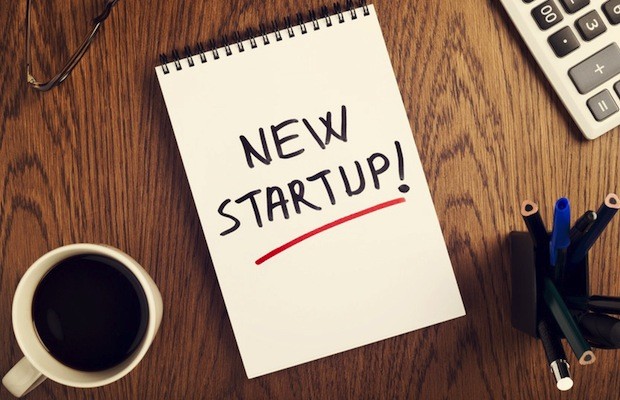How do you know if you have a good idea for a business? Sure, talking about what you’re doing to friends and family can help, but until you get your idea in front of real users, you’re just shooting in the dark.
As Basecamp founder Jason Fried explains:“You can’t ask people who haven’t paid how much they’re willing to pay. Their answers don’t matter because there’s no cost to saying ‘yes’ ‘$20’ ‘no’ ‘$100’. They all cost the same—nothing.” “The only answers that matter are dollars spent. People answer when they pay for something. That’s the only answer that really matters.”But when you’re just coming up with a new idea it can take serious time (not to mention cash) to create a product people are willing to pay for. So, rather than wasting weeks, or months, or even years building something no one wants, what if there was a better way to know you’re on the right path? We call this process validation, and it’s probably the most important part of turning your business idea into reality. Let’s take a look at what validation really means and then dive into a few key ways to test your ideas. Want to get some hands on help with validating your business idea? Sign up for the free Validate your idea in the next 30 days webinar with Ryan Robinson happening February 15th.
How to validate your business idea
What does it mean to actually get validation? As Jason Fried explained, it’s getting people to vote with their wallets. If you can’t find a few paying customers for your product then maybe you need to rethink your angle. If we go a little bit deeper, here’s what entrepreneur, writer, and CloudDevs friend Ryan Robinson explains says validation is and isn’t:Validation is…
Designed to give you reasonable certainty your business will have a sustainable, growing, paying audience in a matter of days or weeks, rather than wasting months or years building a final product nobody will pay for. It’s as much a way of thinking, as it is a step-by-step process. The end result validation attempts to achieve is most often meeting a desired number of pre-orders or waiting list subscribers who’d purchase a basic proof of concept of your idea—a minimum viable productthat solves the most simple form of the problem you’re attempting to address.Validation isn’t…
A guarantee of success and it most certainly isn’t easy. It’s not as simple as putting up a waiting list and hoping people miraculously discover your offering and fork over their hard-earned money for something that doesn’t exist yet. It takes work to build confidence, inspire trust and convince a community that you’ll be able to deliver enough value in exchange for the price you’re asking. Validation is designed to give you your first paying customers and foundation for future growth. Ryan has an incredible post on how to validate your business idea that we’re going to borrow heavily from in this post. Read the full post on his blog here. So, at its core validation is the process of quickly building a basic version of your product to test, learn, and modify based on feedback from real, paying users. Before you can make any guesses or decisions about what your audience wants, you need to actually build something for them to use.Building an MVP to validate
Because of a variety of factors (your market, the alternative solutions to the problem, etc.), your MVP—minimum viable product—will likely look much different than others out there, so it can be helpful to ask:“What could we make at a minimum to get our product functioning to prove it is a solution to a problem?”This could be a blog, a landing page, even a demo of the product you want to build. The key here is to find the core problem your product solves in a unique and novel way, and build something to address that specific problem. When you start building, you’ll be tempted to try to do it all. To create the vision of the product you dream about at night. But this is a trap you need to avoid at all costs. Instead, build the simplest, cheapest version of your idea and see if there’s a real demand. Here’s an example: A few years ago, we needed photos for a new homepage for CloudDevs and after getting frustrated with the stock photo options online we decided to hire our own photographer. Being stuck with low-quality, expensive stock photography was a problem we were having and we assumed other people were too. So after the shoot was finished we put the photos online for free under the Creative Commons Zero license on a site called Unsplash promising 10 high-res, free-to-use images every 10 days. Today, over 1 billion photos are viewed a month on Unsplash and we’ve even spun it off into its own company. But we didn’t know things would turn out this way when we launched it. Rather than spending weeks or months creating a website that might flop, we created our Minimum Viable Product for Unsplash using a $19 Tumblr blog theme. The first, albeit rough version of Unsplash was up and running within 3 hours. Next, we wanted to validate our idea by seeing if the people that we thought would want to use something like Unsplash actually would. So we submitted it to Hacker News, a site dedicated to entrepreneurs, designers, and developers (our target audience). Within a few hours, over 20,000 photos were downloaded from Unsplash. And because we didn’t know how much interest there would be, we originally hosted the images from a personal Dropbox account. We ended up hitting a traffic limit and the images stopped working. Idea validated!
After you build, it’s time to learn
Just like we submitted Unsplash to Hacker News for feedback, the next step of validating your idea is to get real people in front of it. There’s more ways to do this than we can list, but here’s a few suggestions from Ryan Robinson:- Reach out manually to friends, family, and industry influencers
- Submit to relevant online communities like Hacker News or Growth Hackers
- Submit to relevant Facebook groups
- Submit to relevant sub-Reddits
- Guest post about your product on relevant publications
Your MVP doesn’t have to be a website or app
The story of Unsplash is a great one, but if you’re coming at your business idea without the design or development skills to build a website or app, you can still validate your idea. As Ryan explains, one of the most important tactics you can use is to leverage your skills and outsource your weaknesses.“When it comes to validating a business idea, fast and simple is the name of the game… To move as quickly as possible without wasting time and money, you need to focus on the skill set you already have and make it work”For Ryan, this meant focusing on his writing skills and outsourcing everything from website design to any development work to freelance designers and developers. Similarly, you need to focus on what your marketable skills are and find ways around the rest. When we built Unsplash, we didn’t say we needed to create a custom web app (which it is now), and instead just used tools that were available to us. In the same way, the first version of CloudDevs wasn’t a custom app, but rather a Wufoo form and Mailchimp newsletter! Don’t let your own fears get in the way of creating an MVP. We’re here to learn, not to try and create the perfect product.
If you’re looking to build a business, the one resource you can’t waste is time. There’s always the possibility to make more money, but once you waste time, it’s gone forever. Validation gives you the chance to use your time as wisely as possible. To stop you from wasting it going down the wrong path. If you want to learn how to validate your idea using real-world examples from best-selling authors, successful entrepreneurs, and artists, join Ryan Robinson and us in the free Validate your idea in the next 30 days webinar on Wednesday, February 15th.






